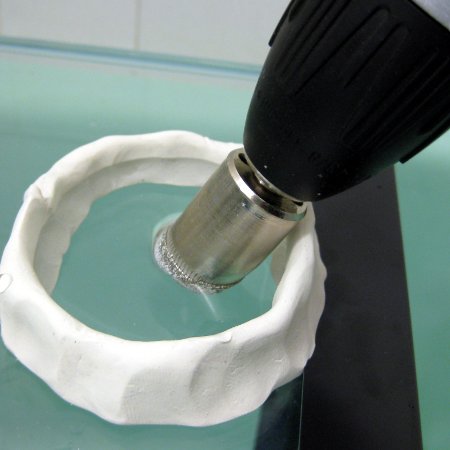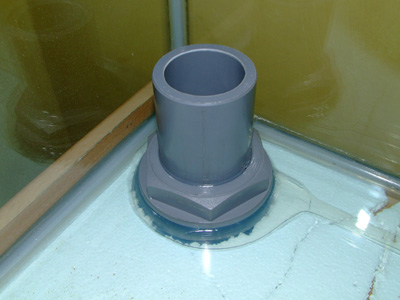
Drilling in aquariums is not difficult – it is basically the same as drilling normal glass. However, additional precaution should be taken when drilling aquariums compared to normal glass.
As they always say, measure twice and drill once.
The sizing for pipes – bulk heads and the diamond coated drill bits are different. Be sure you have the right sized drill bit.
For example, if you are drilling for a 3/4″ bulk head, you need to be using a 1 1/2″ diamond drill bit. You can always choose to buy a set, and save.
Pipe is measured as an inside diameter. So 1-1/2″ pipe or a 1-1/2″ fitting will have an ‘inside diameter’ of 1-1/2″. However, the outside diameter can vary depending upon the type of pipe or fitting used and depending upon the specific manufacturer. Be sure to measure the outside diameter properly so that you drill the correct size hole. This may sound rather basic, but we assure you that it is a common mistake.
There is always a small risk of causing a break when drilling any glass. While the risk is extremely small if proper drilling techniques are used, this small risk is always there. If a break would occur when drilling in regular glass, it is frustrating, but not a major loss. However, the loss of an aquarium is much more significant, so reasonable care should be taken.
Avoid drilling in the bottom of the tank: The bottom of a tank is often tempered glass, but it is extremely rare for the sides to be tempered. Additionally, the water weight on the bottom is significantly higher than on the sides of a tank. Anytime glass is cut or drilled, micro fractures always occur along the cut, and the hole reduces the structural strength of the glass. While tanks are generally “over engineered” to be much stronger than actually needed for their capacity, the bottom is the “weakest link” and should generally be avoided.
Drill at least 1″ from the sides of the glass: All glass contains minor imperfections and flaws. Micro fractures also occur along the edge of glass when it is cut. To avoid placing any additional stress on those weak spots, we recommend staying at least 1″ away from any glass edge.

